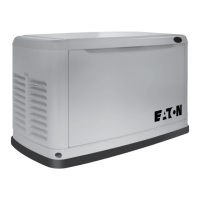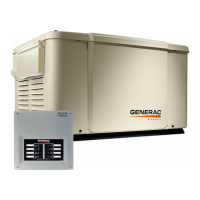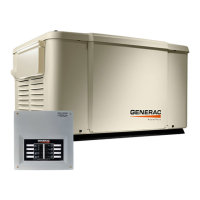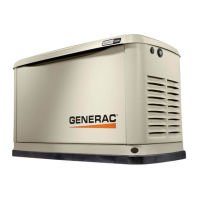8
EXTERNAL ELECTRICAL CONNECTIONS
1. Drill a 1 ¾ inch hole and feed the conduit through the hole.
2. Remove the knockout in the back of the connection box, feed
the wires through the back of the box and secure the conduit
with the lock nut.
Seal the hole with silicone caulk. Don’t forget to caulk the hole
inside the house as well.
3. Mount the connection box so that it completely covers the hole in
the wall. Caulk around the sides and top of the box to ensure a good
seal.
Connect all wires to the lugs in the connection box (black to black,
red to red and white to white). Attach the green ground wire to
the ground screw and connect the two small plugs to their mating
receptacle ends.
4. Replace the protective cover plate and retaining screw, and
lock the connection box.
5. For 10-20 kW models, locate the metal hasp that is packaged
in the owner’s manual bag. Insert the hasp in the slot located
on the left side of the external circuit breaker box. Be sure that
the clip of the hasp is facing toward the front of the generator.
If desired, lock the external box.
GENERATOR CONNECTIONS – RTS LOAD
CENTER TRANSFER SWITCH
1. If the generator comes with an external connection box and
5’ seal-tite whip pre-wired and connected to the generator, no
additional connections are necessary at the generator. Skip
the following section and proceed with Appendix A, RTS Pre-
Wired Load Center Transfer Switch Installation & Operational
Testing.
2. If the RTS Load Center transfer switch was purchased
separately from the generator, the 5’ seal-tite whip will need
to be connected to the generator. To complete the wiring, run
the ¾” conduit for the power leads and control wires from the
external connection box to the generator.

